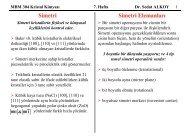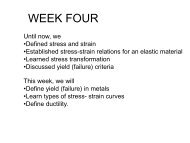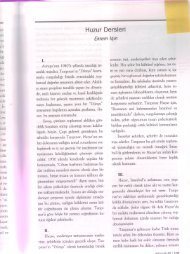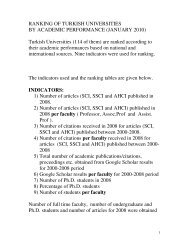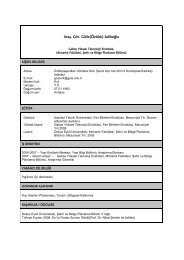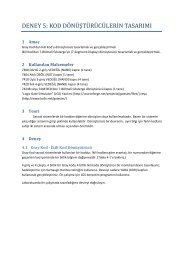How to Hire A-Players: Finding the Top People for ... - GIT home page
How to Hire A-Players: Finding the Top People for ... - GIT home page
How to Hire A-Players: Finding the Top People for ... - GIT home page
Create successful ePaper yourself
Turn your PDF publications into a flip-book with our unique Google optimized e-Paper software.
42 <strong>How</strong> <strong>to</strong> <strong>Hire</strong> A-<strong>Players</strong><br />
interviewing a regular part of your business schedule ra<strong>the</strong>r than a<br />
periodic necessary evil in which you reluctantly participate.<br />
There is a saying in sales: cus<strong>to</strong>mers buy when <strong>the</strong>y are ready <strong>to</strong><br />
buy something, not when we are ready <strong>to</strong> sell something. The same<br />
principle holds true in recruiting. <strong>People</strong> change employers—and<br />
even careers—<strong>for</strong> <strong>the</strong>ir reasons, not ours. A fixed schedule of interviewing<br />
allows you <strong>to</strong> initiate relationships with people now who<br />
will come <strong>to</strong> work <strong>for</strong> you down <strong>the</strong> road. This is <strong>the</strong> kind of strategic<br />
approach <strong>to</strong> recruiting that most business owners and executives<br />
believe <strong>the</strong>y are <strong>to</strong>o busy <strong>to</strong> execute. If you are <strong>the</strong> exception,<br />
it will pay off in more A-players who will take your business <strong>to</strong> a<br />
new level of success.<br />
A-Player Principle: Have each member of your leadership<br />
team interview at least two <strong>to</strong> three new people per month.<br />
The time commitment is reasonable, and <strong>the</strong> payoff from<br />
having a pipeline of talent <strong>for</strong> your company is significant.<br />
But What if I Don’t Have a Job <strong>to</strong> Fill?<br />
When I tell executives that <strong>the</strong>y should be interviewing all <strong>the</strong> time,<br />
<strong>the</strong>y often tell me that <strong>the</strong>y can’t—because <strong>the</strong>y don’t have a position<br />
<strong>to</strong> fill. What <strong>the</strong>y don’t understand is that your commitment is<br />
<strong>to</strong> interview all <strong>the</strong> time, not <strong>to</strong> hire all <strong>the</strong> time. Chris Burkhard,<br />
whom I just described, interviewed someone during layoffs. If he<br />
can pull that off, <strong>the</strong>n you can certainly meet with potential<br />
employees when you don’t have an open position. To do this, you<br />
just have <strong>to</strong> communicate your recruiting approach appropriately<br />
and let people know that:<br />
1. You are not actively looking <strong>to</strong> hire at this time; but<br />
2. You are always interested in meeting great people.<br />
3. Sometimes when you meet <strong>the</strong> right people, you hire <strong>the</strong>m first<br />
and <strong>the</strong>n find a position <strong>for</strong> <strong>the</strong>m.





